Digital Poster
Quantitative Imaging: AI, Analysis, & Beyond
ISMRM & ISMRT Annual Meeting & Exhibition • 10-15 May 2025 • Honolulu, Hawai'i

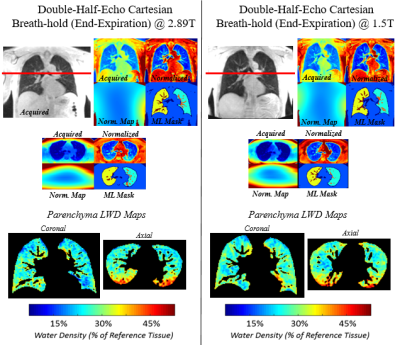 |
Computer Number: 1
2102. Lung
Water Density (LWD) Imaging with MRI: Normative Values and
Dependence on Field Strength, Pulse Sequence and Breathing
Maneuver
R. Thompson, C. Keen, A. Kirkham, R. Sherrington, R.
Coulden, H. Jones, P. Seres, J. Grenier
University of Alberta, Edmonton, Canada
Impact: MRI-derived lung water density (LWD) is
independent of age, sex and field-strength in healthy
individuals but highly sensitive lung inflation (breathing
maneuver) and with potential bias due to acquisition
approach (k-space trajectory).
|
|
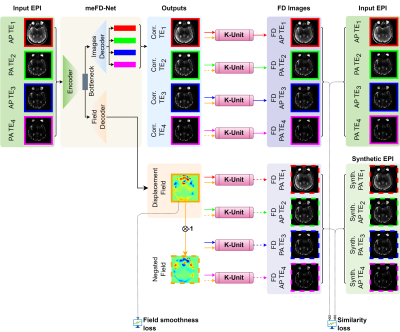 |
Computer Number: 2
2103. Physics-driven
deep unsupervised correction of susceptibility artifacts in
blip-reversed multi-echo EPI for rapid T2 mapping
A. Zaid Alkilani, M. Utkur, C. Ariyurek, S. Kurugol, T.
Çukur, O. Afacan, E. U. Saritas
Bilkent University, Ankara, Turkey
Impact: Applicability on multi-echo EPI scans, high
anatomical accuracy and fast processing times enabled by
meFD-Net significantly enhances feasibility in clinical and
research settings. These advancements can facilitate
real-time EPI applications through efficient, artifact-free
imaging across diverse conditions.
|
|
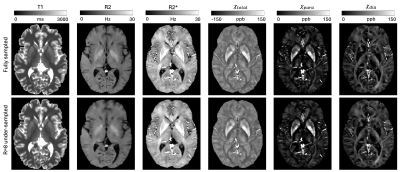 |
Computer Number: 3
2104. Accelerating
Multi-parametric MRI Sequences Using Learned Acquisition and
Reconstruction Optimization (LARO): A Retrospective Study
J. Zhang, H-G Shin, B. Dewey, S. Remedios, A. Carass, X. Li,
P. van Zijl, S. Saidha, P. Calabresi, J. Prince
Johns Hopkins University, Baltimore, United States
Impact: Our study demonstrates LARO’s potential to
accelerate time-consuming multi-parametric and
multi-contrast MRI sequences, paving the way for
comprehensive lesion profiling within practical scan times.
LARO acceleration ensured consistent parametric maps (except
for R2) and ROI segmentations.
|
|
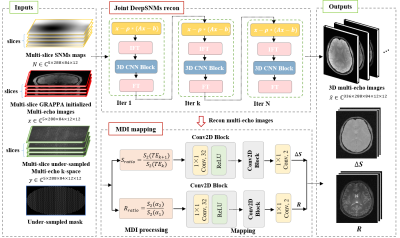 |
Computer Number: 4
2105. Accelerating
the Whole-Brain Multi-Parametric Imaging through Joint Deep
Learning Reconstruction and Physical Model Integration
J. Zhao, Y. Ye, J. Cheng, Y. Liu, Y. Li, J. Xu, D. Liang, S.
Jia
Medical AI Research Center, Shenzhen Institutes of Advanced Technology, Shenzhen, China
Impact: The proposed method accelerated 3D whole-brain
multi-parametric imaging while simultaneously quantifying
T1/T2*/QSM/PD, benefiting clinicians with faster,
high-resolution scans.
|
|
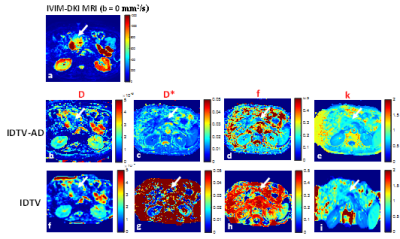 |
Computer Number: 5
2106. Optimization
of IVIM-DKI MR Imaging model using Automatic Differentiation
Methods: Enhancing the Computation Efficacy by 100 Fold
H. Hanif, H. Maurya, E. Kayal, G. M, R. Hariprasad, R.
Sharma, K. Khare, D. Kandasamy, A. Mehndiratta
Indian Institute of Technology - Delhi, New Delhi, India
Impact: Novel spatially constrained IDTV-AD method using
automatic differentiation demonstrated significantly fast
(at least 100 times faster than the state-of-the-art method)
and accurate IVIM-DKI parameter estimation, tested in
clinical dataset of pancreatic cancer cohort.
|
|
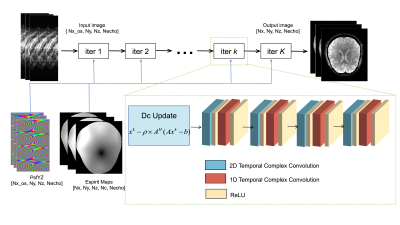 |
Computer Number: 6
2107. Accelerating
Multi-parametric Mapping using a Deep Wave-ESPIRiT Model
X. Yang, X. Han, J. Zhao, H. Zheng, S. Jia, Y. Yang
School of Mathematics and Statistics, Xi’an Jiaotong University, Xi’an, Shaanxi, China
Impact: The proposed DL-Wave-ESPIRiT method
significantly reduces reconstruction time for accelerated
MULTIPLEX imaging, achieving high accuracy in seconds
instead of minutes. This advancement enhances clinical
efficiency and enables faster, more effective imaging
workflows.
|
|
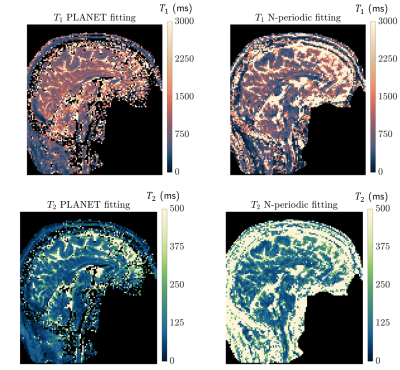 |
Computer Number: 7
2108. Drift-insensitive
and motion-robust relaxometry using N-periodic SSFP
C. Beitone, K. Balaji, K. Miller, N. Bangerter, P. Lally
Imperial College London, London, United Kingdom
Impact: We introduce a novel and flexible approach for
SSFP-based relaxometry, which shows advantages over existing
approaches in its robustness to slow variations over an
experiment.
|
|
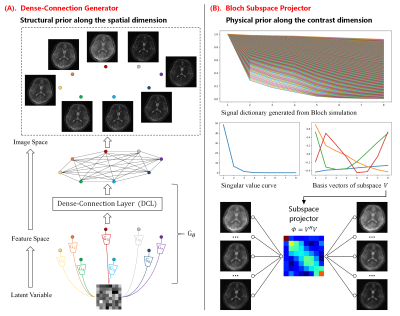 |
Computer Number: 8
2109. Unsupervised
quantitative MRI reconstruction with densely-connected
generative modeling and Bloch subspace projector
Z. Li, H. Sun, C. Liu, W. Chen, R. Li
Tsinghua University, Beijing, China
Impact: The proposed reconstruction framework is
flexible with different physical models. It has potential to
be used for other quantitative MRI imaging applications.
|
|
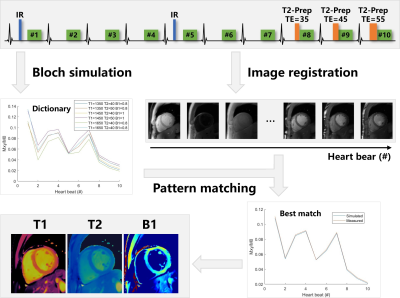 |
Computer Number: 9
2110. Initial
Experience of Cardiac Multi-parametric Mapping at 5.0T with
Single-shot Cartesian Acquisition and Dictionary Matching
Z. Lyu, H. Huang, H. Yang, P. Hu, H. Qi
School of Biomedical Engineering & State Key Laboratory of Advanced Medical Materials and Devices, ShanghaiTech University, Shanghai, China, Shanghai, China
Impact: The validation of simultaneous myocardial
multi-parametric mapping at 5.0T demonstrated promising
performance, with potential for more accurate myocardial
assessments in clinical settings.
|
|
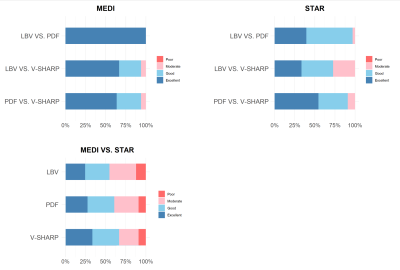 |
Computer Number: 10
2111. Robustness
of Texture Features in Quantitative Susceptibility Mapping:
Influence of Background Field Removal and Inversion Algorithms
S. Fang, Y. Tang, G. Li, W. Zhao, C. Yang, L. Chen, C. Ma,
X. Wu, J. Li
Shanghai Key Laboratory of Magnetic Resonance, School of Physics and Electronic Science, East China Normal University, Shanghai, China
Impact: The
robustness of texture features varies across different
background field removal and inversion algorithms in QSM
reconstruction. The impact of the QSM reconstruction
algorithm on texture features should be carefully considered
before clinical implementation.
|
|
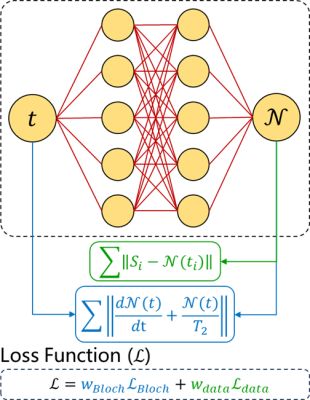 |
Computer Number: 11
2112. T2
mapping with Bloch Equation-Informed Physical Intelligent Neural
Network
Q. Cai, L. Zhu, J. Zhou, C. Qian, R. Tong, L. Mei, X. Jiang,
Q. Xu, X. Qu
Xiamen University, Xiamen, China
Impact: The proposed method provides a new way to
quantify tissue parameter, which does not require analytical
formula of Bloch equation under specific sequences, and is
expected to simplify the sequence design of quantitative
magnetic resonance imaging.
|
|
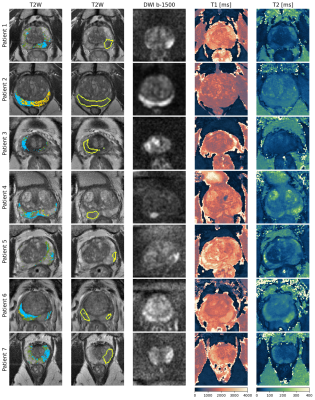 |
Computer Number: 12
2113. Deep
learning enabled fast free-breathing stack-of-stars
multiparameter mapping for fully quantitative analysis of
prostate carcinoma.
H. Y. Kim, C. Pirkl, R. Schulte, P. Garcia-Polo, X. Wang, M.
Cencini, V. Spieker, S. Gines, A. Guidon, M. Tosetti, L.
Marti-Bonmati, J. Schnabel, M. Menzel
Technical University of Munich, Munich, Germany
Impact: Quantitative transient-state imaging combined
with deep learning-based reconstruction provides high image
quality T1 and T2 maps, enabling a fully quantitative
evaluation of prostate cancer diagnosis with the potential
of improving the prostate diagnosis pipeline.
|
|
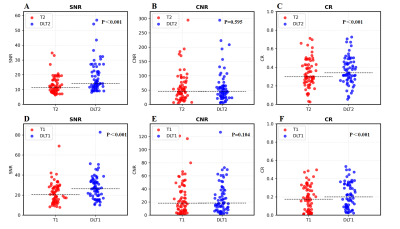 |
Computer Number: 13
2114. Deep
Learning-based Super-Resolution reconstruction for Fast T1 and
T2-weighted Head and Neck MRI
S. Li, W. Yan, X. Y. Zhang, L. Ji, Q. Yue
West China Hospital of Sichuan university, Chengdu, China
Impact: This integrated deep learning framework offers a
clinically viable solution for accelerated head and neck MRI
acquisition while enhancing image quality, potentially
improving workflow efficiency and patient comfort in routine
clinical practice.
|
|
 |
Computer Number: 14
2115. Integrating
Classical Image Filters with Physics-Driven Deep Learning for
Sharper Image Reconstruction
J. Yun, M. Akçakaya
Electrical and Computer Engineering, University of Minnesota, Minneapolis, United States
Impact:
The proposed approach incorporates simple Laplacian sharpening filters into unrolled networks, which is shown to enhance sharpness, with visual improvements. This hybrid methodology represents a promising direction, merging traditional techniques with DL for superior image quality. |
|
 |
Computer Number: 15
2116. Robust
variable flip angle T1-mapping by time optimal control
C. Graf, A. Jaffray, C. Diwoky, A. Rund, S. Steinerberger,
A. Yung, A. Rauscher
University of British Columbia, Vancouver, Canada
Impact: The advancement in VFA T1-mapping
using robust excitation pulses designed by time-optimal
control reduces scan time as no additional acquisition of B1+-maps
is necessary, and it minimizes potential errors associated
with inaccuracies in the B1+-maps
and their correction.
|
|
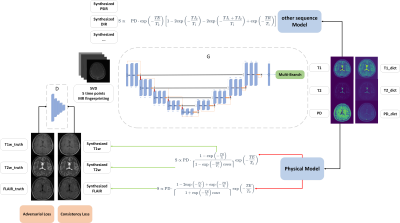 |
Computer Number: 16
2117. Quantitative
Maps Synthesis from Magnetic Resonance Fingerprinting via
Physical-guided Deep Generative Model
B. Zhang, K. Wang, X. Wu, L. Zou, Y. Zhu, D. liang, Y. Zhou,
H. Wang
Paul C. Lauterbur Research Center for Biomedical Imaging,Shenzhen Institute of Advanced Technology, Chinese Academy of Sciences, Shenzhen, China
Impact: Our proposed MRF sequence-based quantitative map
generation model produces quantitative maps that better
capture clinically relevant contrast details. It also
enables the calculation of various weighted images from
these more accurate quantitative maps, supporting more
comprehensive clinical diagnosis.
|
The International Society for Magnetic Resonance in Medicine is accredited by the Accreditation Council for Continuing Medical Education to provide continuing medical education for physicians.